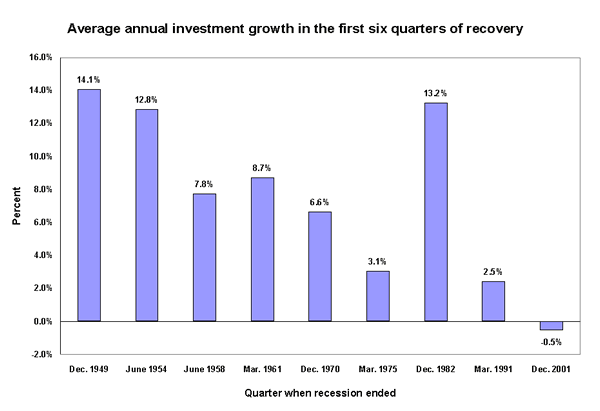Snapshot for October 8, 2003.
Lack of investment stalls recovery
Almost two years after the recession officially ended in November 2001, the economic recovery is still too weak to increase employment. The culprit for this “jobless recovery” is not the surge in productivity, but the lack of demand.
Unlike previous recessions, consumers kept their demand relatively high in 2001, sustained by easy credit. So, when the recession ended, there was little pent-up consumer demand that needed to be satisfied and that could boost growth rates. Instead, faster growth depended on increases in other parts of the economy, such as investment growth. However, investment growth in this recovery period has been atypically weak, contributing to the lack of demand growth and to the jobless recovery.
Investment has been an important force in the early stages of past recoveries. On average, investment grew in inflation-adjusted terms by 8.6% annually during the first six quarters of the previous post-war recoveries—well above its long-run average real growth rate of 4.7% (see figure). In the six quarters since this recovery began, investment declined 0.5% annually, which makes this the first recovery where investment was lower after six quarters into a recovery than at the end of the recession.

Investment’s “contribution” to growth in this recovery has actually been negative. If investment had merely grown at the average rate that prevailed during the first six quarters of past recoveries (8.6%), and if total economic growth had reacted to investment growth in the same way it did in previous recoveries, economic growth in this latest recovery would have been 3.8% instead of the actual 2.7%. Overall growth of 3.8% would probably have been strong enough to increase the number of jobs since the end of the recession.
Source: National Bureau of Economic Research; National Income and Product Accounts (NIPA) from the Bureau of Economic Analysis.
Today’s snapshot was written by EPI economist Christian E. Weller.
Check out the archive for past Economic Snapshots.
